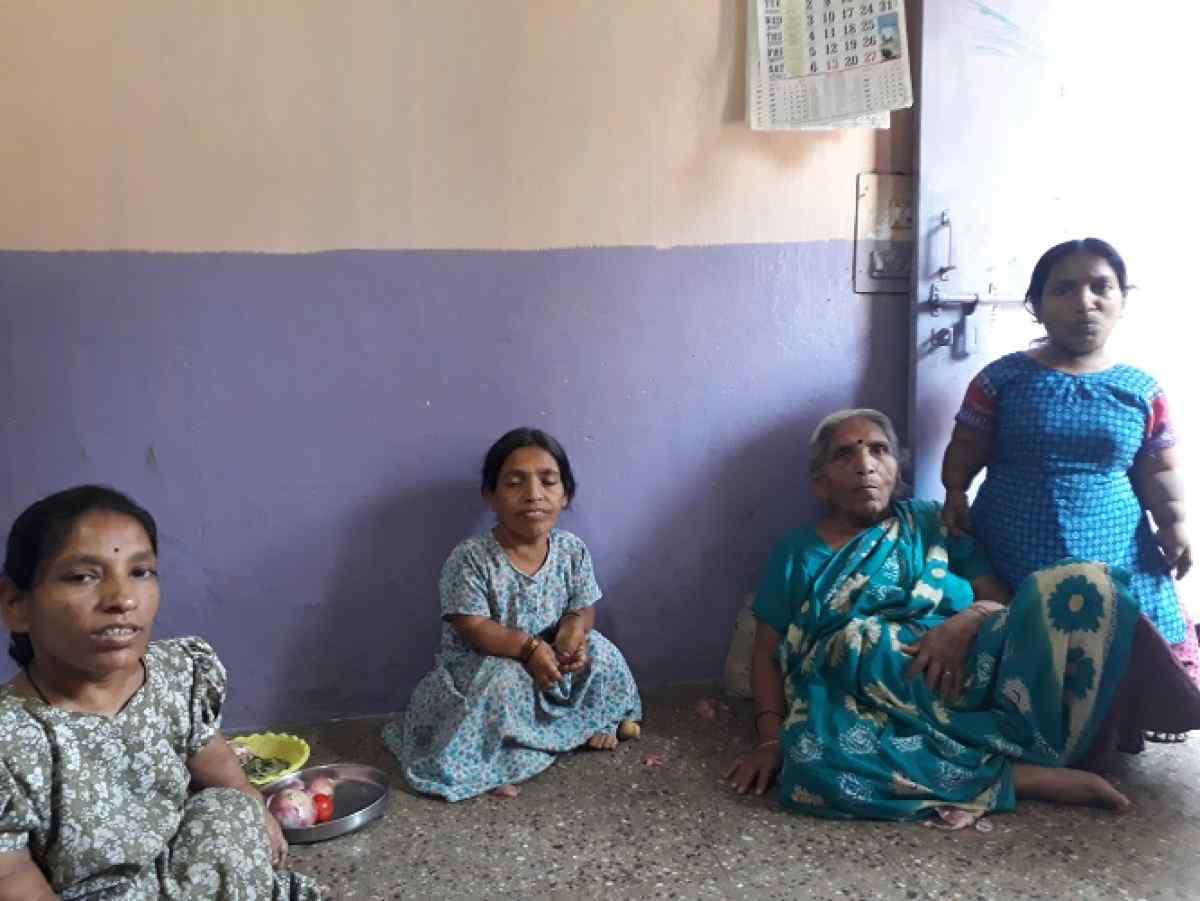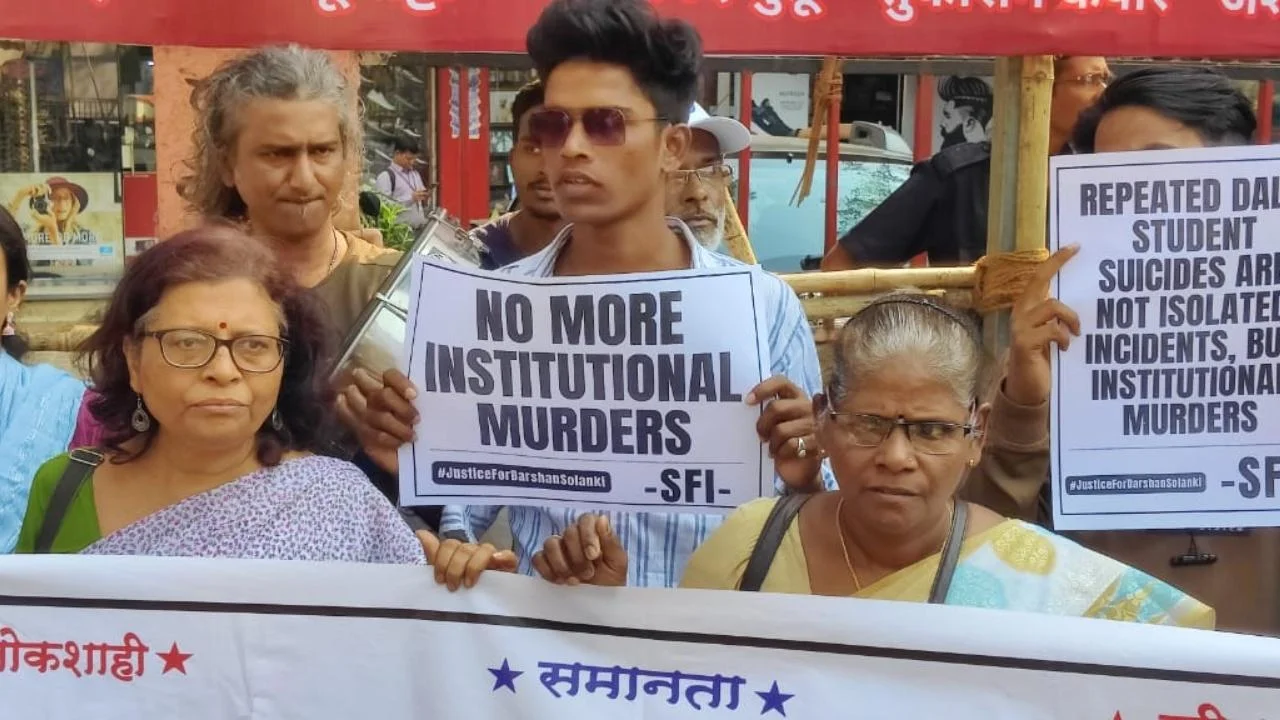One day, somehow I happened to overhear a conversation of some youngsters and soon I could easily make out that they were cracking jokes without realising that they were indulging in snatching away the humanity of some, just because they were physically unique individuals. One of them jestingly asked, “Why can’t midgets wear tampons?” And the answer was, “Because they keep stepping on the string!” Trying to keep up with the tempo, another boy asked, “What do midgets look forward to in life?” And the answer was, “Growing up!”
I can’t explain how I felt. I realised how cruel and heartless we as human beings have become. I felt ashamed to be a part of this so called civilised and progressive society.
We are victims of ‘sizeism’ and our ‘sizeist’ attitude makes us feel physical disgust when confronted with people of differing sizes whether they are smaller, fatter, or taller than the average, ‘acceptable’ size. And this is the reason that persons with dwarfism seem to be vertically ‘inadequate’ to people around them.
Dwarfism has always been strongly related to fables and boorish entertainment. Fascination with people who were physically different openly becomes a pastime of this civil society. Let me remind my readers that disability is not a form of entertainment and I deplore the ones who use it for such.
We Most find door handles placed too high for them. Chairs and desks aren’t dwarf-friendly. Public transport doesn’t have ramps for easy entry and exit for them.
But how many of us actually have ever thought about the kind of lives people with dwarfism live. Even though dwarfism is now recognised as one of the disabilities according to the Rights of Persons with Disabilities Act 2016, those working in disability sector or the activists still have no idea of the kind of disgrace and humiliation this section has been facing.
More than 200 distinct medical conditions cause dwarfism, but 80 percent of the modern cases are Achondroplasia (kind of dwarfism). This disorder, which occurs in about 1 in 25,000 births, restricts the growth of limbs, resulting in adult height of 4-feet-10 and under, a rate that has remained unchanged for centuries. Individuals may have stiff joints and tight muscles, and the pain makes average movements difficult.
Also read: Disabling Tinder: Online Dating For Women With Disabilties
The Centre may identify ‘dwarfism’ as a form of disability, joining the list of conditions that entitle an individual to affirmative action but has anyone ever considered the kind of barriers they continue to face?
One such example is door handles. Most find door handles placed too high for them. Women with dwarfism have to face this problem when they use public restrooms. For men public urinals aren’t fixed while keeping people of such short stature in mind. Chairs and desks aren’t dwarf-friendly. Public transport doesn’t have ramps for easy entry and exit for them and even cars don’t come equipped with specifications to suit their needs. Other daily struggles in everyday activities include finding shoes that fit, withdrawing money from an ATM, or catching a bus.
There are also issues that affect sex and sexuality. Some have arms that are too short to reach and touch one’s genitals or hip rotation limitations that prevent the possibility of straddling. Women with dwarfism have problems during pregnancy and child birth.
The psychosocial limitations of society prove to be more disabling than the physical symptoms. They tend to internalise ‘otherness’ that comes from a lifetime in a body that is stared at, insulted, and verbally abused. The hardest part of being a little person is the discrimination they confront. Dating and relationships of love come with a lot of challenges for women with dwarfism. Especially when they actually hear things like, “If you weren’t little, I would date you.” They have negative body image issues as they do not fit into the traditional notions of femininity. All this may have an isolating affect on them.
Dating and relationships come with a lot of challenges for these women. They have negative body image issues as they do not fit into the traditional notions of femininity.
Dwarfism has remained a source of amusement for centuries, in writings, paintings, sculptures, and photographs. The capture of the image of a female dwarf becomes both a visible record and a chance to earn profit, not because of her talent but due to her uncommon appearance. ‘Dwarf throwing’ is a common form of vulgar entertainment in movies and shows. Showing them as objects or without any emotions and desires is nothing short of dehumanising them.
Even today people with dwarfism, especially women, have to spend their entire life fighting this ‘dwarf’ label. They are subject to stigma, stereotyping, and discrimination. Since time immemorial they have been considered as ‘freaks’ and ‘oddities‘ and have been shown as a spectacle, and looked upon as comic figures. Almost every day we see people on TV making short people the brunt of many a joke. Pop culture continues some of these ambiguous representations.
The women with dwarfism are portrayed as objects of laughter and intellectually lacking. They are being spoken to like a child rather than an adult and an equal. Neither the mainstream feminist movement nor the Body Beautiful Campaign includes them.
Being pushed to the fringes of the society their humanity is completely ignored. With hidden but meaningful grins, sarcastic comments, and derogatory language like ‘midgets’, self-esteem of women with dwarfism nosedives.
There is titillating fascination with their personal lives. Glaring comparisons with the average individual, scornful looks and words of ridicule rob them of their self identity and sexuality. Once a woman with dwarfism told me that, people even don’t hesitate to ask her, if she would be able to perform sexual activities with an average-sized man. Another woman told me, “People used to hesitate to talk to me as if I would eat them up or would hurt them physically. Time went by and on 14th November one colleague messaged me ‘Happy Children’s day’. I remember I was being asked by some educated lady if I get regular periods.”
When we see a woman with dwarfism in a public place or being involved in daily activities, doing grocery shopping, or getting sanitary napkins at the drugstore, reactions such as, “Oh, wait! It’s a dwarf!” pour in and a ‘woman’ becomes ‘it’. The whole world turns into paparazzi. “When people refer to us, they often say, ‘Look at it.’ To them, I am
not even human. I’m a different species.”, a woman with dwarfism told me.
The society needs to be sensitised in order to ‘defreak’ them. They need more positive representation in media. Showing a woman with dwarfism as anyone else would help to increase their acceptance. For example, in the role of a teacher, she can be seen shown in a more positive and realistic way unlike mythical and humorous portrayals that encourage people to treat them differently, such as by laughing at them. With increased employment opportunities rather than only working as comedians and entertainers, it would help in increasing their inclusion.
Another woman confided in me saying, “I face daily accessibility issues and I have dealt with ignorance and discrimination due to my dwarfism throughout my entire life. Since I was a child, I am seen as ‘different.’ These experiences have had a huge impact on my identity and my self confidence.”
Also read: So How Has Indian Cinema Portrayed Women With Disabilities?
Please do remember that dwarfism occurs in all races and ethnicities. Dwarfism is not a disease that requires a ‘cure’. It needs social acceptance and understanding.
Featured Image Source: The Quint
About the author(s)
A writer, a counsellor, a teacher, a social worker, a motivational speaker and an activist, Abha Khetarpal, is a National Awardee and one of the 100 Women Achievers in India. She has surfaced in Women Of Pure Wonder, a Coffee Table Book by Vodafone and also honoured with Woman of Substance Award. She works for persons with disabilities. Being a woman with disability her major focus remains on women with disabilities for whom she has authored manuals like ‘Keeping You Abreast; A handbook on breast cancer self examination’ and ‘Going with the Flow; Handbook on Menstrual Management & Hygiene’.





Dear Abha, I am a dwarf woman, living independently in (metro area) of Denver, Colorado. Thank you so much for writing this article. I have shared it on my facebook page, to give more understanding concerning women with dwarfism. It is an article that is accurate and gives others a glimpse into the short statue world. I encourage you to look at my facebook page: https://www.facebook.com/GayleDownenSpeaker/ I am 67 years of age, and a Grandmother! Society is so slow to change, but with articles such as you wrote, the information that we are all unique individuals will help educate the ignorant! Thank you so much!
Hi Gayle,,,I am so glad that you like this piece. I really appreciate all that you have said. I have liked your page on facebook…Tk cr!!
Abha, thank you for writing this article. I do not have dwarfism but I am a short statured male; I stand about 163cm. It is appalling how people with short stature /dwarfism are dehumanized in a society that is supposedly moving towards diversity and acceptance of everyone. From the women you referred to here in your article, to the pygmies in the Congo and even how some shorter people were shipped off to uninhabitable islands of North Korea in 1989, this definitely needs to end! We are all human beings! I have been openly discriminated against in the workplace due to my height; spoke to Human Resources about it and received no recourse. I guess we are still just supposed to bite our tongues and absorb a hostile work environment. Would any other disparate group do that? No! .